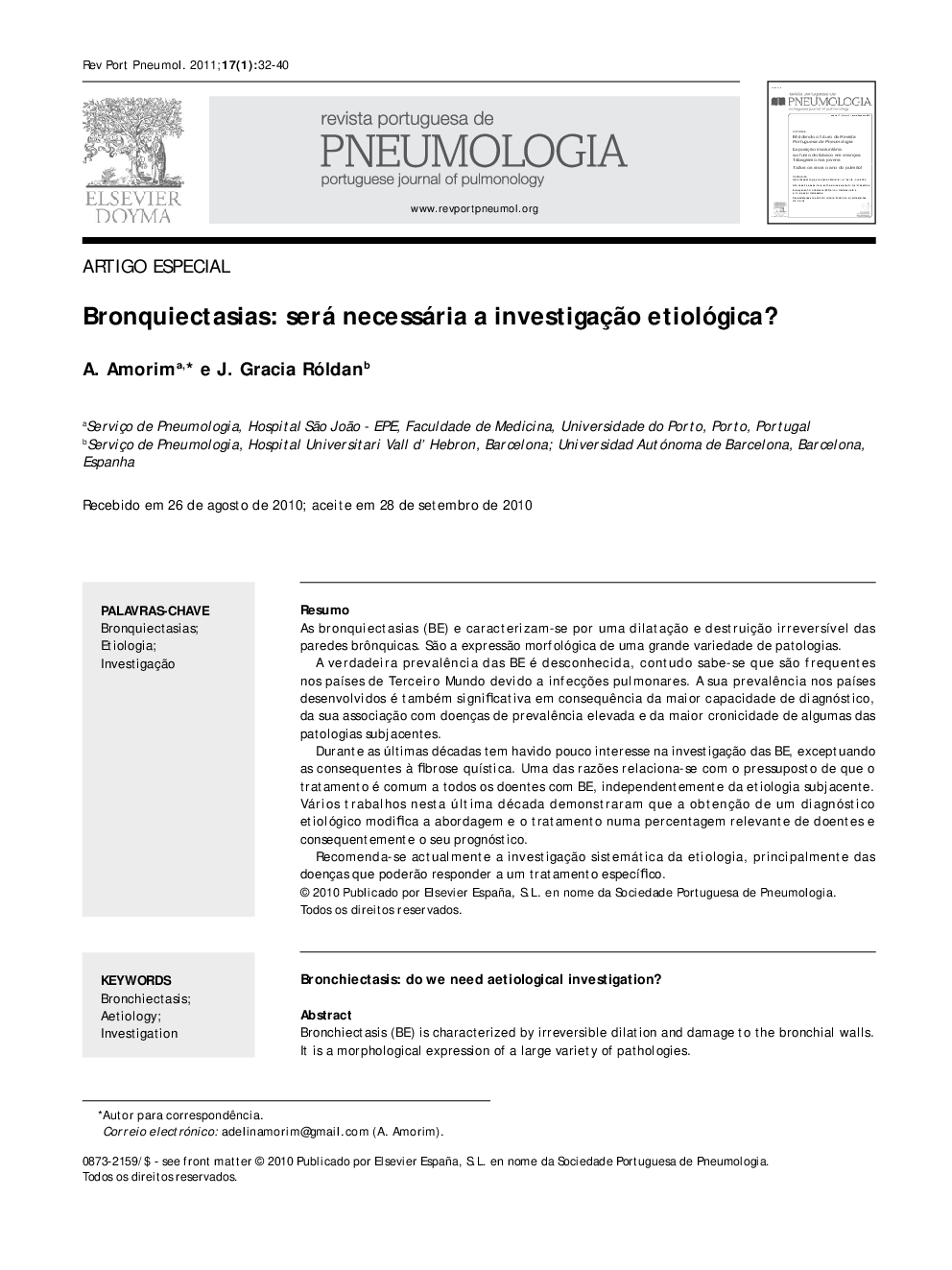| Article ID | Journal | Published Year | Pages | File Type |
|---|---|---|---|---|
| 4213920 | Revista Portuguesa de Pneumologia | 2011 | 9 Pages |
ResumoAs bronquiectasias (BE) e caracterizam-se por uma dilatação e destruição irreversível das paredes brônquicas. São a expressão morfológica de uma grande variedade de patologias.A verdadeira prevalência das BE é desconhecida, contudo sabe-se que são frequentes nos países de Terceiro Mundo devido a infecções pulmonares. A sua prevalência nos países desenvolvidos é também significativa em consequência da maior capacidade de diagnóstico, da sua associação com doenças de prevalência elevada e da maior cronicidade de algumas das patologias subjacentes.Durante as últimas décadas tem havido pouco interesse na investigação das BE, exceptuando as consequentes à fibrose quística. Uma das razões relaciona-se com o pressuposto de que o tratamento é comum a todos os doentes com BE, independentemente da etiologia subjacente. Vários trabalhos nesta última década demonstraram que a obtenção de um diagnóstico etiológico modifica a abordagem e o tratamento numa percentagem relevante de doentes e consequentemente o seu prognóstico.Recomenda-se actualmente a investigação sistemática da etiologia, principalmente das doenças que poderão responder a um tratamento específico.
Bronchiectasis (BE) is characterized by irreversible dilation and damage to the bronchial walls. It is a morphological expression of a large variety of pathologies.The true prevalence of BE is unknown. It is known, however, that in Third World countries it is common due to lung infections. Its current prevalence in developed countries is rather significant due to a greater capacity for diagnosis, its association with highly prevalent diseases and to a greater chronicity of some of the underlying pathologies.Over the last few decades there has been little interest in the investigation of BE, unless it is associated with cystic fibrosis. One of the reasons is the presupposition that treatment is the same for all patients diagnosed with BE, regardless of the underlying aetiology. Several works carried out over the last decade show that a diagnosis based on aetiology changes both the approach and the treatment of BE within a relevant percentage of patients, with a consequent change in the prognosis.Currently, systematic investigation into the aetiology of BE is recommended, particularly in those disorders that respond to specific treatment.
